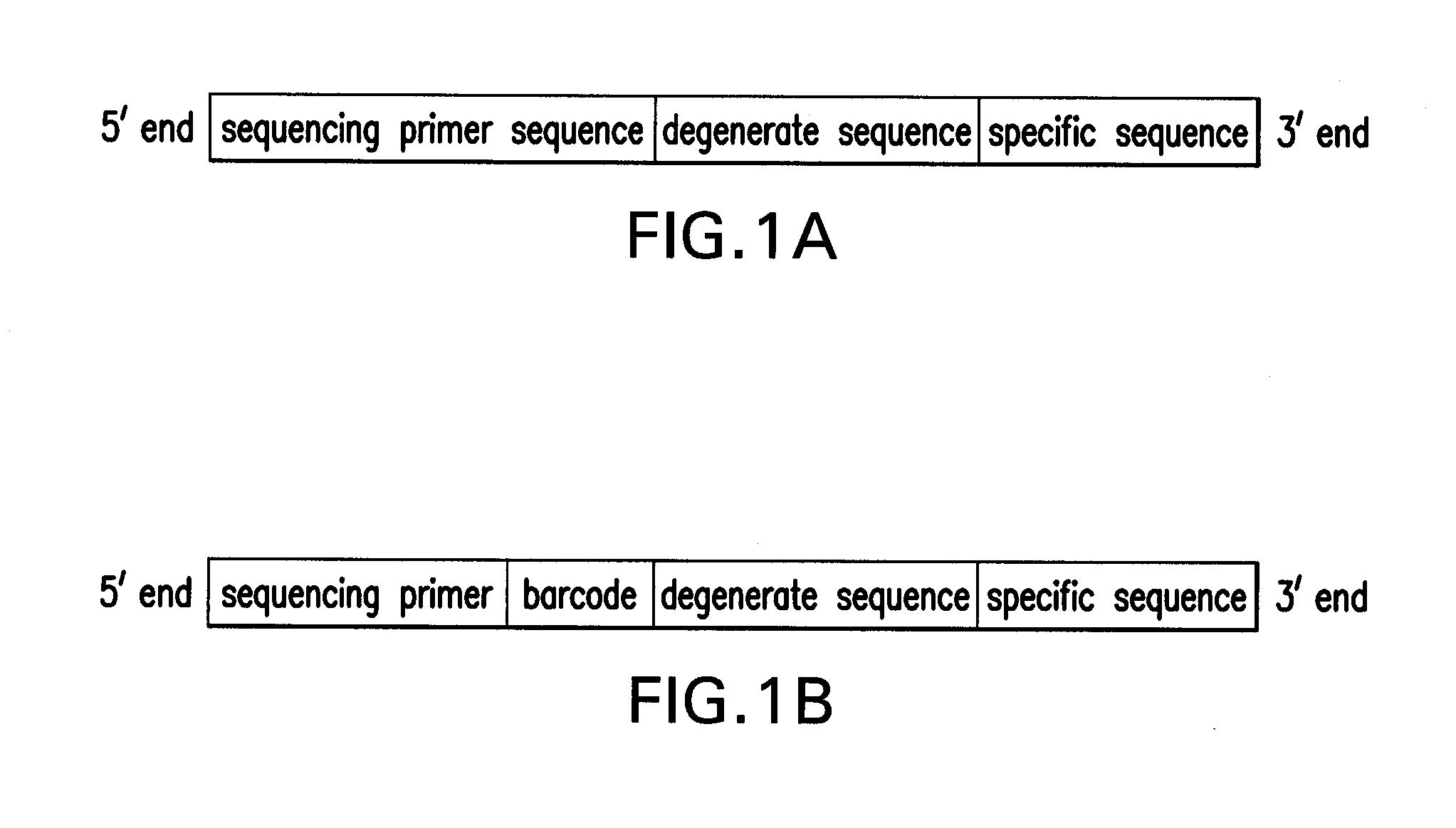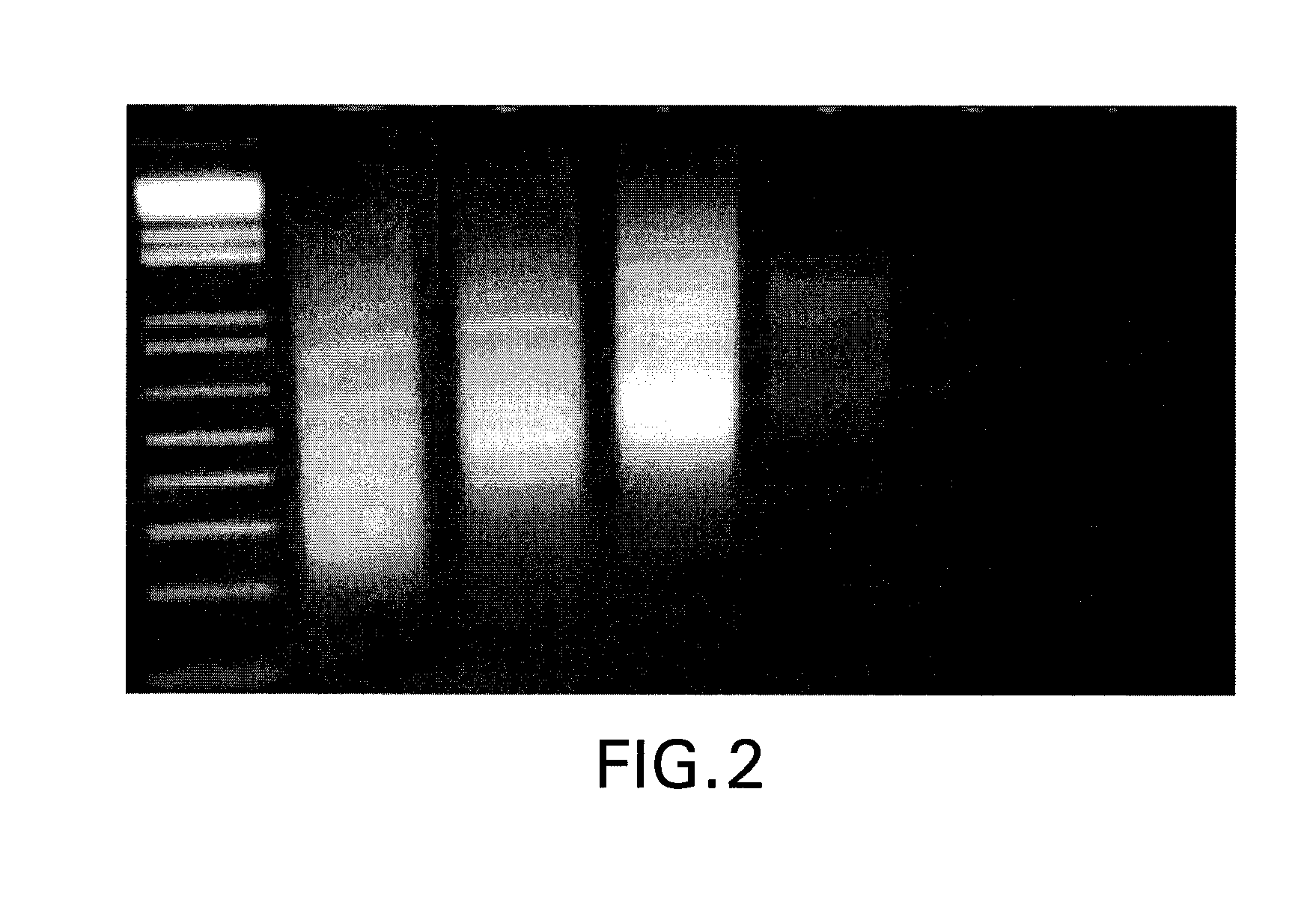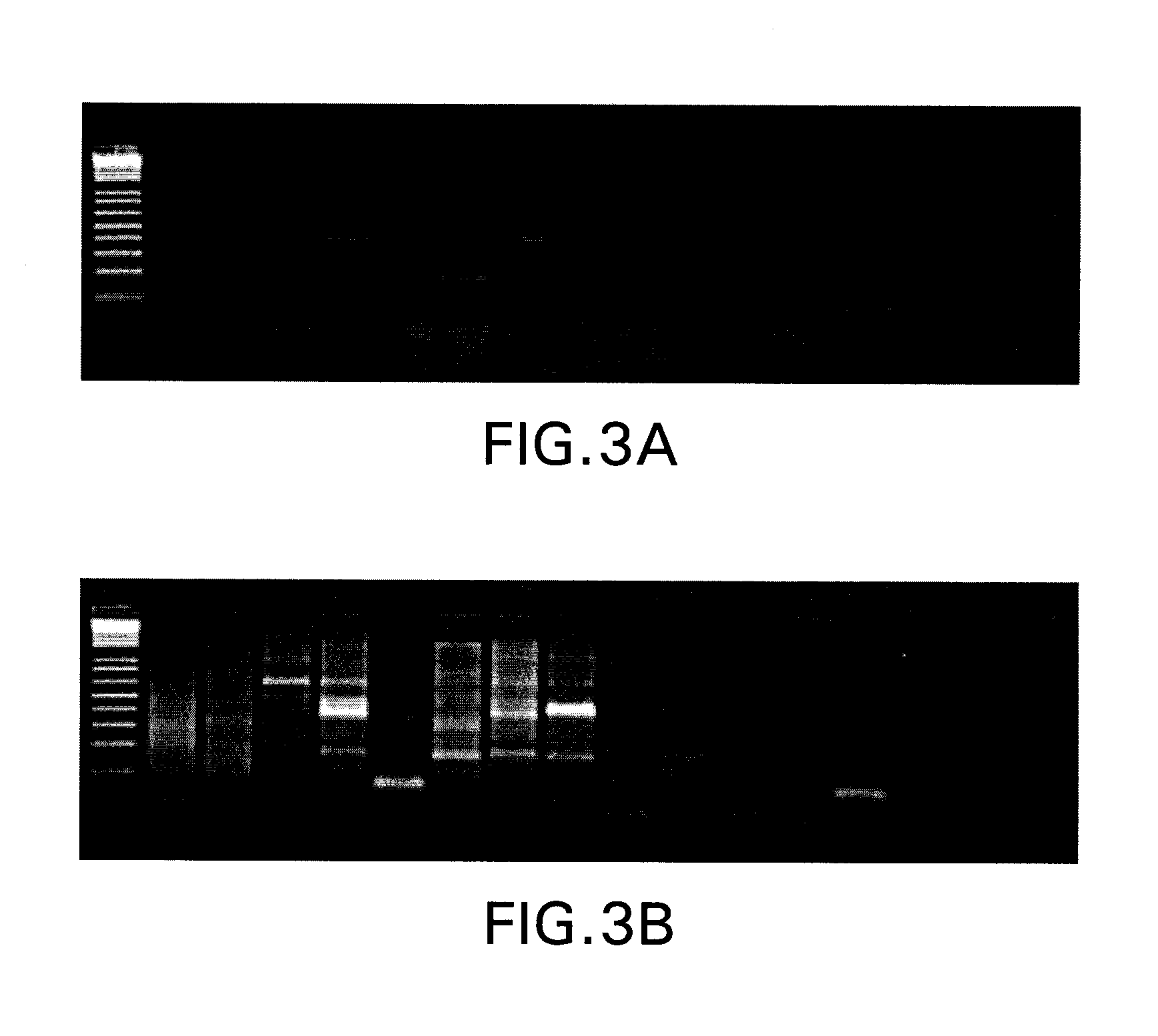Method for genome complexity reduction and polymorphism detection
a genome and polymorphism technology, applied in the field of molecular biology and genetics, can solve the problems of high cost and large number of individuals of current methods, and achieve the effect of reducing the representation of a genome and reducing the representation of said genom
- Summary
- Abstract
- Description
- Claims
- Application Information
AI Technical Summary
Benefits of technology
Problems solved by technology
Method used
Image
Examples
example 1
PCR I—Amplification of Genomic DNA Using a Degenerate or Universal Oligonucleotide Primer
[0041]In this example, two PCR steps are utilized (PCR I and PCR II). The aim of PCR I is to amplify a set of regions in the genome that are flanked by specific sequences defined by an oligonucleotide primer. After amplification, these regions will represent a reduced representation of the genome, to which linkers are added in PCR II, followed by sequencing and polymorphism genotyping.
[0042]The first step of reducing the genome complexity occurs through PCR amplification using an oligonucleotide primer. The oligonucleotide primers contain three components, starting from the 3′ end: (a) a specific sequence that binds to unique target regions of the genome; (b) a degenerate or universal sequence that binds to all possible sequence combinations in the genome; and (c) a tail sequence for annealing of a sequencing primer (referred to as a sequencing primer sequence or sequencing primer in FIGS. 1A an...
example 2
Optimization of Oligonucleotide Primer Properties for PCR I
[0049]The oligonucleotide primer properties that were defined are (a) the number of degenerate (N) bases to be used in the degenerate sequence and (b) the number and type (i.e., A, C, G, or T) of bases to be used in the specific sequence.
[0050]Number of Bases in the Degenerate Sequence.
[0051]As each additional degenerate base is added to the oligonucleotide primer, the concentration for a given primer composition decreases by ¼ relative to the total primer concentration (assuming that each nucleotide—A, C, G and T—is added in an equimolar amount in the degenerate position). Therefore, PCR amplification is expected to decrease as additional degenerated bases are added, as fewer primers will be available to amplify a given product. We tested PCR amplification using 10, 15, and 20 degenerate bases using standard PCR conditions (see below). The primers tested are described in Table 1. As anticipated, a significant decrease in th...
example 3
Optimization of PCR Cycle Annealing and Extension Conditions for PCR I
[0058]Two alternative strategies were tested regarding the PCR annealing and extension conditions in PCR I. Condition A involved a PCR profile consisting of 30 cycles of 94° C. for 2 min, 45° C. for 1 min, and 68° C. for 0.5 min, and a final step at 68° C. for 5 min. Alternatively, condition B was used, consisting of 94° C. for 2 min, followed by 5 cycles of 94° C. for 2 min, 45° C. for 1 min, ramp 2 min to 68° C., and 68° C. for 0.5 min; then 25 cycles of 94° C. for 2 min, 62° C. for 1 min, and 68° C. for 0.5 min, and a final step at 68° C. for 5 min.
PUM
| Property | Measurement | Unit |
|---|---|---|
| time | aaaaa | aaaaa |
| nucleic acid | aaaaa | aaaaa |
| width | aaaaa | aaaaa |
Abstract
Description
Claims
Application Information
 Login to View More
Login to View More - R&D
- Intellectual Property
- Life Sciences
- Materials
- Tech Scout
- Unparalleled Data Quality
- Higher Quality Content
- 60% Fewer Hallucinations
Browse by: Latest US Patents, China's latest patents, Technical Efficacy Thesaurus, Application Domain, Technology Topic, Popular Technical Reports.
© 2025 PatSnap. All rights reserved.Legal|Privacy policy|Modern Slavery Act Transparency Statement|Sitemap|About US| Contact US: help@patsnap.com



